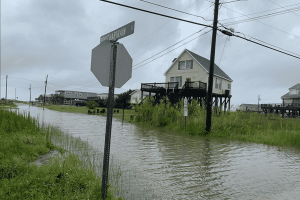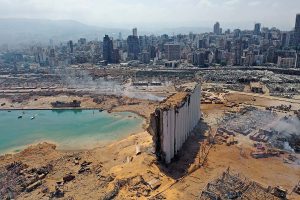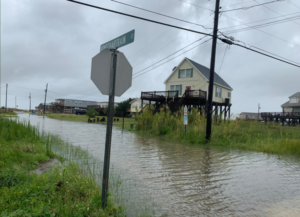What are Flood Damage Inspections?
Flood damage inspections are a professional evaluation of structural, electrical, and mechanical damage caused by flooding. Performed by licensed engineers, this inspection identifies hidden water intrusion, mold risks, and foundation compromise—crucial for insurance claims and property safety.
Flood Damage Inspections – Florida
Expert Flood Damage Inspections in Florida by Licensed Engineers
Have you experienced water damage from hurricanes, storms, or burst pipes? Our licensed structural engineers specialize in flood damage inspections across Florida — ensuring accurate documentation, insurance-ready reports, and safe property restoration.
We help condo boards, HOAs, building owners, and real estate investors protect their properties after flood events.
Why Flood Damage Inspections Matter in Florida
With Florida’s coastal exposure and frequent storms, water intrusion can weaken a building’s:
Structural foundation
Concrete, masonry & framing
Drywall, insulation & flooring
HVAC, electrical & plumbing systems
Hidden flood damage = hidden liability.
Our certified inspections ensure you’re not leaving dangerous or costly issues undetected.
Our Flood Damage Inspections Services Include:
Full Structural Assessment
We inspect foundations, walls, and framing for water saturation, cracks, or long-term compromise.
Moisture & Mold Detection
We use thermal imaging and moisture meters to detect behind-wall water damage and mold risks.
Engineering Damage Reports
Stamped engineer reports are provided for insurance claims, code compliance, and legal protection.
Photo Documentation & Remediation Plans
Detailed photos and restoration guidance to ensure swift and accurate repairs.


Who We Work With
Condominium & HOA Boards
Commercial Property Managers
Residential Homeowners
Real Estate Buyers & Sellers
Insurance Adjusters & Public Adjusters
Legal & Property Damage Professionals
🛠️ We provide fast, compliant service across coastal and inland Florida.
Areas We Serve in Florida
We serve flood-prone communities across the state, including:
Central Florida (Orlando, Kissimmee, Clermont)
East Coast (Cocoa Beach, Melbourne, Palm Bay)
South Florida (Fort Lauderdale, Miami, Naples)
West Florida (Tampa, Sarasota, Cape Coral)
Houston, Corpus Christi, New Orleans
When Should You Get a Flood Damage Inspection?
After hurricanes or tropical storms
Water intrusion from failed roofing or pipes
Flooding from storm surge or excessive rainfall
During real estate transactions (pre-purchase inspection)
Before submitting insurance claims
📅 The sooner you inspect, the more accurate your insurance claim.
Get a Certified Flood Inspection Today
📞 Call Now: (321) 355-6052
📩 Request an Inspection — Fast, licensed, and compliant reports.
🌐 External Authority Links
📋 FAQ
Q: What’s included in a flood damage inspection?
A: We inspect visible and hidden damage to structure, electrical, HVAC, roofing, and interiors, with a full engineer’s report.
Q: Is a flood inspection necessary for insurance claims?
A: Yes. Insurance adjusters often require an engineer’s report to process flood claims accurately and fairly.
Q: How soon after a flood should I schedule an inspection?
A: Immediately. Delaying inspections can worsen structural issues and limit insurance coverage eligibility.
Q: Do you work with public adjusters or attorneys?
A: Yes. We provide third-party, objective engineering reports for claims and litigation support.
Flood Damage Inspections Florida | Condo Milestone
Get fast, certified flood damage inspections in Florida. Licensed structural engineers for HOAs, condos, and real estate. Schedule now at https://forensicstructuralengineers.com.
Flood Damage Inspections
EMA engineers provide flood damage inspections in Jacksonville, St. Augustine, Palm Coast, Daytona beach, Ormond Beach, Melbourne, Sebastian and surrounding areas.We protect ourself and our clients from the unique challenges posed by flood damaged inspections of damaged buildings.
Hazards in and around flood damage inspections of buildings include the risks of:
- growth of large mold colonies;
- septic system collapse;
- trip-and-fall injuries;
- structural collapse;
- fire and explosions;
- toxic sludge and materials containing waterborne bacteria; and
- electrical shock hazards.

Forensic Flood Damage Inspections
- Inspect the flood damage inspection building exterior for downed power lines and gas leaks. Gas leaks will smell like rotten eggs. If you suspect a gas leak, contact the utility company immediately.
- While entering the building, see if the door sticks at the top. If it does, this could mean that the ceiling is ready to collapse. After you open the door, stand outside the doorway, clear of any falling debris.
- Wear sturdy, treaded boots. According to the American Red Cross, the most common injury following a disaster is cut feet. Broken bottles, nails, glass, and other dangerous debris may litter the floor, and stairs may be very slippery.
- Once you are inside the home, check for gas leaks again by flood damage inspections. If you smell gas or hear a blowing or hissing noise, open a window and quickly leave the building. Turn off the gas at the outside main valve, if you can, and call the gas company from a neighbor’s home. If you turn off the gas for any reason, a professional must turn it back on. Never use an open flame inside of a flood-damaged house unless you know that the gas has been turned off and the house is ventilated. To inspect for damage, use a battery-powered lantern or flashlight, and not an open flame or electrical fixture in the house.
- Do not use appliances that may have gotten wet unless you know they have been dismantled, cleaned and dried.
- Do not work by yourself during flood damage inspections. If you are injured, it might take a long time before you receive assistance. If you must work alone, bring a cell phone or radio so you may call for assistance, if the need arises.
- Bring a HEPA-rated respirator to use in case you detect extensive mold. If you are asthmatic or otherwise at heightened risk to mold exposure, leave the building. Other inspector-safety equipment, such as gloves and coveralls, may also prevent contact with mold and other contaminants.
-
Florida Flood damage Inspections
- Examine doors, walls, windows, floors and staircases to make sure that the flood damage inspections of building shows no signs of potential collapse. Inspect for loose plaster, drywall, and ceilings that may fall. Also, inspect the foundation for evidence of cracks and other structural damage that may render the building uninhabitable.
- Inspect for fire hazards, such as broken and leaking gas lines, flood damage inspections electrical circuits, and submerged furnaces and electrical appliances. Flammable and explosive materials may travel from upstream. Be aware that fire is the most frequent hazard in homes following floods.
- Inspect for electrical system damage, such as broken and frayed wires, and burned insulation. You can turn off the electricity at the main fuse box or circuit breaker. If you have to step in water to get to the fuse box or circuit breaker, call an electrician first for advice. Electrical equipment should be inspected by a qualified professional and dried before being returned to service.
- Inspect for sewage and water supply-line damage. If you suspect sewage lines during flood damage inspections have been damaged, avoid using the toilets and instruct the client to call a plumber before using flood damage inspections. If water pipes are damaged, instruct the client to contact the water utility company and avoid operating the tap.
- Use caution while inspecting crawlspaces for a variety of reasons, such as the presence of mold, sewage, asbestos, chemicals, rodents, and the risk of structural collapse.
- Watch out for animals, especially poisonous snakes, which may have been washed into the building during the flood. You can use a stick to poke through debris to check for dangerous critters.
